QuestionQUESTION: Im glad to see a "Saddlebred" person on the experts list! I rode with a Saddlebred /Morgan show barn for 10 years as a teenager/adult & I now have a National Show Horse(Pinto)that is 14 yrs.young, and has been under saddle for 10 months now(long story but happy ending).I've started taking him on some trail rides and he has been doing great, and is very willing to deal with the "scary"things he sees.However,I have now progressed to an easy canter up a slight hill for safety,and he begins with a kind of jumping / hopping little bucks,then he stops and canters.I've had the saddle fit checked and the vet has cleared him physically. Is it possible he's overly excited and needs to review some basics in the arena?Thanks!
ANSWER: So this horse has only been broke to ride 10 months, or was formerly a show horse that is being used for pleasure? Not clear, so will answer both ways. Please clear up for me, as may bring other things to light while mulling this. Also, have you had this horse all of his life, or just recently acquired him? And how you are setting him up for the canter? And do you ride in cutback or western saddle?
And not sure what you mean by cantering up a hill for safety. How much of an incline, and why safer on hill? And are you in another gait at first, already on the hill, or stopped on hill then asking for canter? Just the motion of trying to start up hill at canter might cause the hip hop dance here.
If this is a green broke horse, (or for that matter an older trained horse) cantering up a hill would disrupt the 3 beat gait of a canter, and possibly cause the "hitch" you are getting when you ask for a canter.
You would be far better off working on the canter in the arena for a while until you can easily transition out on the trails. Work on getting the canter from all gaits, as well as from a standstill.
He could be getting hyped up to canter, and the arena work would help there.
If he was already trained, and let me know if he wasn't at all, as you said he was 14? Is it possible he was trained for saddleseat years ago? If so, that would explain the actions he is taking.
Riding saddleseat as you probably remember, sets a horse up to canter by turning head to rail, moving rail leg back behind girth, ring side leg in front of girth, and moving hindquarters over so that the leading step is with correct lead. It is, especially if you then ride QH or other breeds/discipline, a strange way to get a canter...considering the seamless way the reiners are trained, for instance.
Check your mechanics also, are you asking for the canter with the same cues each time, or pushing horse into it from trot. He may also be more unsure of his footing on an incline, and feel like he needs to leap into it.
And while the saddle fit may look right, is it possible that during the ride, it is moving forward or be put on too far forward, so that it is interfering with his shoulder movement. And could be something with the canter/incline that pulls a muscle/tendon/ligament when he canters, that is not visible on a vet call.
Is it always to the same lead? And does this happen on the flat too?
Too, going up a hill would put his weight as he attempts to canter, on the front end, as he is pulling himself up, and may be doing the hip hop dance to get weight balanced so that he can propel himself up. Is the hill enough that you are maybe balancing some on reins?
Please give me a little more on this horse's background, and answers to why hill, what saddle type, how does at canter on flat, how cued, and anything else you can let me know, so that I can help you better.
---------- FOLLOW-UP ----------
QUESTION: Hi, Sorry I wasn't very clear. Here are the details that would help!
I rescued this horse about 20 months ago
and he was a showhorse for halter/in hand classes at Arabian shows, but not trained for groundwork, or saddle as far as anyone could tell, so we started from square one.I did the groundwork then he was in a training barn for about 7-8 months where he was doing arena work in all gaits.I have done the canter cue (the saddleseat way as he was also trained with)in an arena and I get the headthrowing/headshaking with a low bucking from him. I then thought I'd try a canter on train in a very minimal incline and let HIM choose the lead and just lean forward to see what would happen. The same thing. I check the saddle frequently during the ride and check for shoulder clearance and I use a nice Stubben Dressage saddle for trail.He is a little tight on the right front leg...we try and carrot stretch daily and eat off the ground.
What do you mean when you said "Is it possible he was trained for saddleseat years ago, If so, that would explain the action he is taking?"He is otherwise an amazing story and example of an "extreme makeover" and how he has proven all the negative advice from "HORSE TRAINERS"that said it was hopeless. This canter thing is really all that remains to be worked out!I can't attach an image because I'm not on my own computer at the moment, but he is a stunning tri colored bay tobiano , NSH ,HAHA/AHA and PtHA registered that is trying so hard to please.
Thank You!
AnswerThe method for cueing the Saddlebreds into a canter, was from a complete standstill, and then head and forequarters turned to rail, as the hindquarters were moved over away from rail, using rail leg behind girth, and ring leg in front of girth, and the rider leaning in the direction of the lead to be taken. The first movement was always something of a jerky one, and half of the audience and all of the grooms would all be leaning to "help" the horse get the lead.
It was just the way they trained them, rather than the calmer method of cueing with toe on side away from lead to be taken near elbow. Thought maybe if he had had that taught to him, might explain some of what he is doing.
Does he canter with no problems in the pasture? Or does he not canter there at all?
Have you had a chiro look at him? And this will sound odd I imagine, but take a tape measure like you sew with, and measure from where his front legs join his body, down to his coronet band. Both legs. I have never seen a horse that measures exactly the same on both legs, (same as humans, this is why when you buy shoes you always measure the dominant hand foot for fit.)
The difference may not be much, but I have seen 1/4 of an inch difference on some. Most farriers are looking to see that each hoof measures the same, say 4 and 1/4, but if the leg on one side is shorter, then can cause problems with the gaits. Or soreness. Imagine if you had on a pair of boots, and one of them had the heel cap off. At first you would be aggravated, but after a while you would be sore, and then your back and shoulders would hurt.
A leather pad, if this is found to be evident, can be used under shoe to level length. Saw this done of TB's, with good results.
Again I do know it sounds odd, but no living creature is symmetrical, (sp?) and one side or the other is longer. And that difference can cause problems.
I also saw the benefits of equissage, acupuncture over 8 years with TB's, and am a firm believer in using it. When the needles would be put into areas of non oxygenated blood, it would come out looking like treacle molasses, and the horse felt such relief it was amazing.
Dr. Daw said that the blood had stayed in that area, and all of the oxygen had been depleted, so it was not ciruculating well at all.
Of course, it is pricey at times, but well worth it. There are also books with massage techniques in them, and some of the chiro, such as leaning weight against tail, or bringing head down on your shoulder with fingers locked on poll can help too.
Also, take each hind leg, and standing with yourself at side looking to rear, pick the leg up, and bring interlocked hands down to fetlock, raise the hind leg up and pull lightly towards the front. The leg should be about the level of the bottom of your knee joint. Hold and feel for his tension to release. Repeat on other side.
With the front legs, pick it up, and extend it with fingers interlocked on pastern, to the front, and lean weight against it as you lightly pull it out straight. The will generally feel really good to horse, so be prepared for him to kind of "lay back" and stretch himself while you are holding leg. Repeat with other leg
You can also do some more of the stretching exercises, and pay particular attention to the left hind, as he would be probably sore back there if he is tight on the RF, as works on diagonal in this case.
Problem could also be originating in the LH, so worth checking into.
Also might try using rubbing alcohol and really giving him a good massage all over, up and down, "listening" with your fingers for tight areas.
Take a bath towel, long enough for you to get a good grip on ends, and loop behind each leg, and see saw it back and forth, like you do after bath to dry off, and work from as high as you can get on leg, down to pastern and back up. This will increase the blood flow, and loosen muscles.
And might too, if have video camera you can have someone tape you with, watch him on it and see if you can spot something off at any point in him, maybe a little hitch somewhere.
Check his neck for tight spots too, and walk your elbow up and down his shoulder crease to loosen muscles, most of them really get into that, and lean into you, so be prepared. And can use a tennis ball, or one of those balls they sell with the nubs on it, sometimes I see them for dogs to chew up, or have seen them for people to massage their feet with, but used to use them on the horses and they enjoyed them a lot.
I will ponder this some more. So glad you have saved him, and if you get pictures, my e-mail is mimijean@grm.net. Would love to see him. Please write back and let me know if any of this is helping. I will write more if I think of something else.

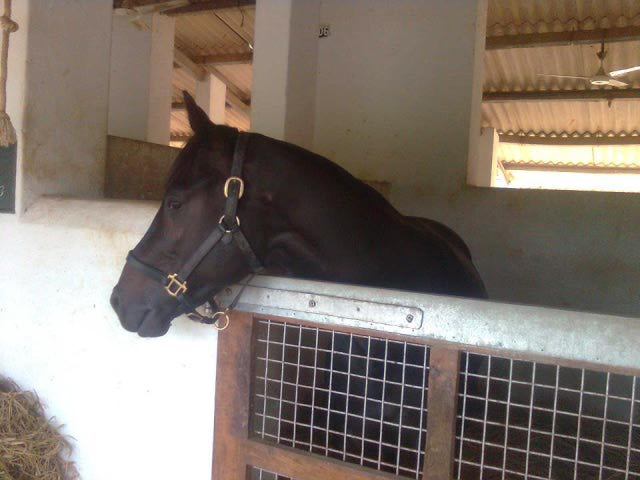 turning the face towards wall
Question
shy horse
hello maam, when i approache
turning the face towards wall
Question
shy horse
hello maam, when i approache
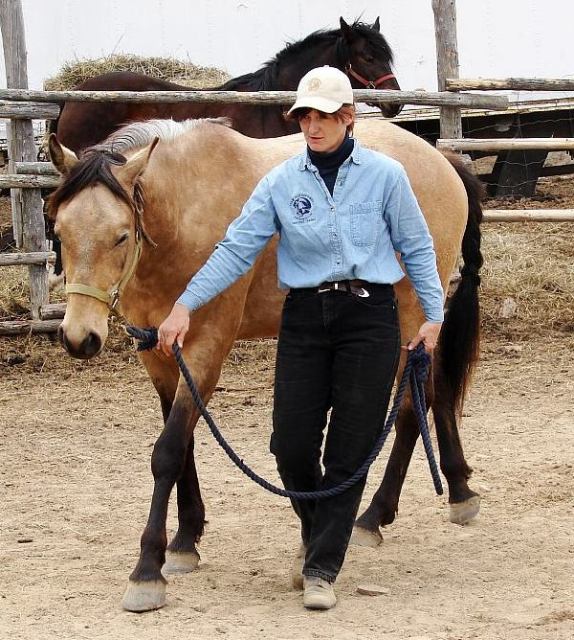 running into her stall
QuestionI recently purchased a 6 year old Standardbred
running into her stall
QuestionI recently purchased a 6 year old Standardbred
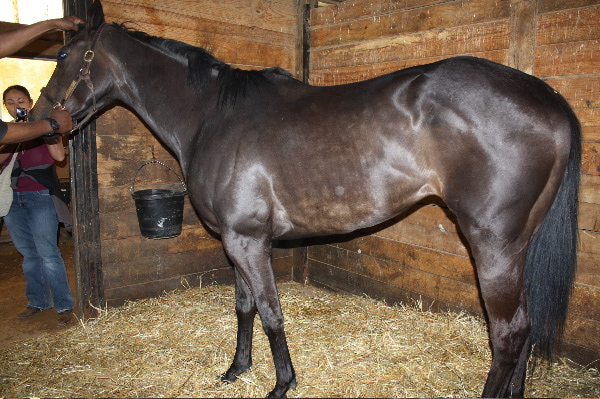 is it sweet itch
Question
light patches on belly
hello maam, may
is it sweet itch
Question
light patches on belly
hello maam, may
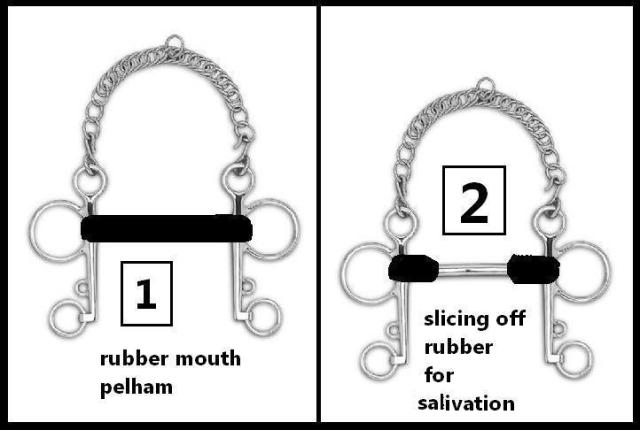 slicing off rubber on the central part of mouthpiece irrespective of any bit it is
Question
slicing off rubber on
hello maam, as you said
slicing off rubber on the central part of mouthpiece irrespective of any bit it is
Question
slicing off rubber on
hello maam, as you said
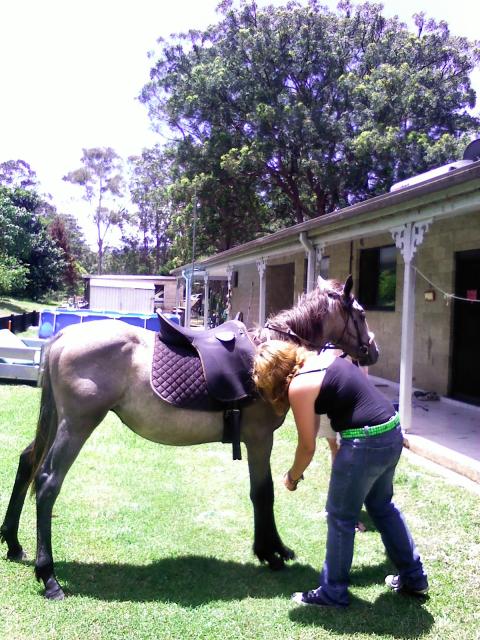 Breaking in and bad habbits
Question
Jasper- saddled
Hi, im 17 years old.i have a 2
Breaking in and bad habbits
Question
Jasper- saddled
Hi, im 17 years old.i have a 2